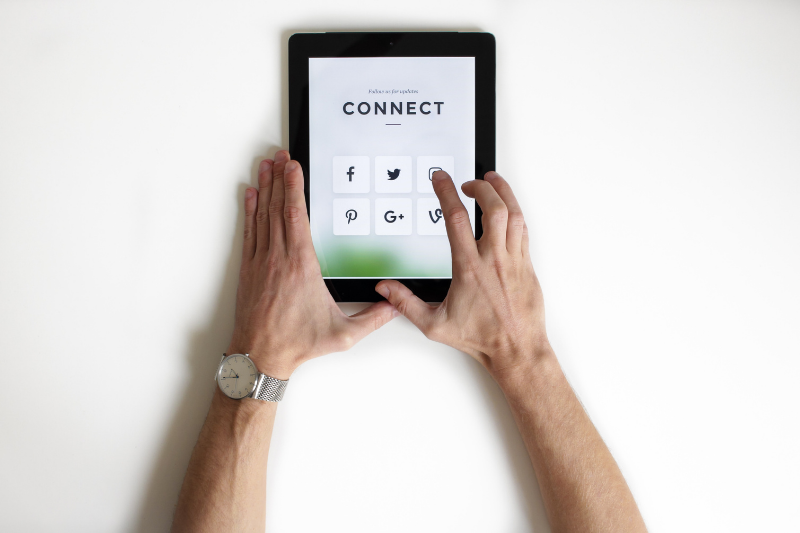Post-pandemic, society will be very different from what we used to know. With the digital world growing expeditiously, the future of online marketing is a challenge unknown to many businesses. Read about significant changes to the digital market and recommendations for a new digital marketing approach for businesses.
As technology indefinitely advances, society naturally gravitates towards online interactions. The pandemic has ignited the rate and degree to which people submerge themselves in the online realm. Thus, conventional methods of physical display advertising, such as newspapers or magazines, are no longer popular. On the other side, digital marketing is expected to boom in the coming years.
With the effects of lockdown and a significant increase in time people are spending indoors, there is also a spike in time spent online. People are exposed to, and processing, more information and marketing content through digital advertisements. Continue reading for predictions for the future of the industry and how to adjust your digital marketing approach to a post-pandemic world.
Changes in Consumer Behaviour
The Covid-19 pandemic has undoubtedly made an impact on society, moulding the way people behave. Psychological and behavioural changes in people are reflected in their consumption trends and purchasing behaviours. One of the most noticeable differences brought on by the pandemic is a decrease in follow-through rate: more people are browsing the web but not actually completing a business’ desired objectives.
While people still heavily browse and explore online, they do not take action, whether it be completing a purchase or becoming a subscriber. As people become more immune to online marketing, brands and marketers have to cultivate higher quality and more innovative content to appeal to these new consumer traits.

What this Means for Digital and Content Marketing
Stay Relevant
As people become hyper aware of the online content they receive, they are more likely to be perceptive and sensitive towards information presented to them. As society becomes more discerning, marketing messages have to be even more tailored and personalised to effectively make an impact on its audience. Businesses have no room to slack off with more consumers online than ever before. Companies need to take advantage of continuously advancing technology available to optimise user experience and get creative with graphic visual and audio elements.
Sharpen Brand Positioning
Over the years, a majority of businesses have realised the power of their online presence and its impact on branding. Despite the growing power of the online world, there are a handful of businesses still reluctant to optimise their brand presence in the online realm. However, the pandemic played a role in prompting them to prioritise brand positioning. Since the pandemic, digital marketing has boomed as businesses scramble to boost their online presence.
Already a highly competitive area, there was a 13.1% increase in the number of digital marketing agencies from 2020 to 2021 in the United States alone. With such growth, competition is anticipated to only rise as businesses recognise the importance of brand positioning.

Prioritise ROI Delivery
Global gross domestic product (GDP) plummeted by 5.5% to 8.7% in 2020, and 3.6% to 6.3% in 2021. Such drastic economic turmoil left a lasting blow even on comparatively successful businesses.
Businesses are being more mindful than ever about their marketing budgets, so how can they deliver Return on Investments (ROI) to their consumers? Providing ROI does not refer to only the services and products businesses provide, but the use and effectiveness of them meeting consumers’ demands. In order to present a detailed return on investments to consumers, businesses will need to demonstrate their value through precise analytical insights. Prioritising ROI delivery will play a heavy role in seamless digital marketing strategies.

Flexibility is Key
One of the major changes caused by the pandemic is people’s work environment. As working from home (WFH) has become the norm for many businesses, some are encouraging the continuation of these measures post-Covid. Despite initial hesitation to this relatively large societal change, many of the world’s leading brands and businesses have learned it induces higher performances and results. With the possibility of WFH becoming the new norm, digital marketing will become highly preferable compared to physical display advertisements.
With reduced time spent in offices, a lot of space, and resources left unused, costly offices are no longer needed and more businesses are investing in automated technology and freelance options. By saving the above costs, marketing agencies can adapt and adhere to public demand.

Wrapping Up
To maintain successful digital marketing results in a post-Covid society, businesses should focus their resources and time on developing new methods that boost ad production that adheres to consumers’ demands. As society has transformed, it is vital to stay on top of changing trends, deliver ROI, and secure your brand reputation. Adopting these new measures will be advantageous to a seamless transition in the post-pandemic digital marketing world.
Related Articles
How E-Commerce Will Help Asia’s Post-COVID Recovery, According to Industry Experts
Future of Work Report: Will Remote Working Continue Post-COVID-19?
Content Marketing: Why It’s The Most Under-Appreciated Digital Strategy





